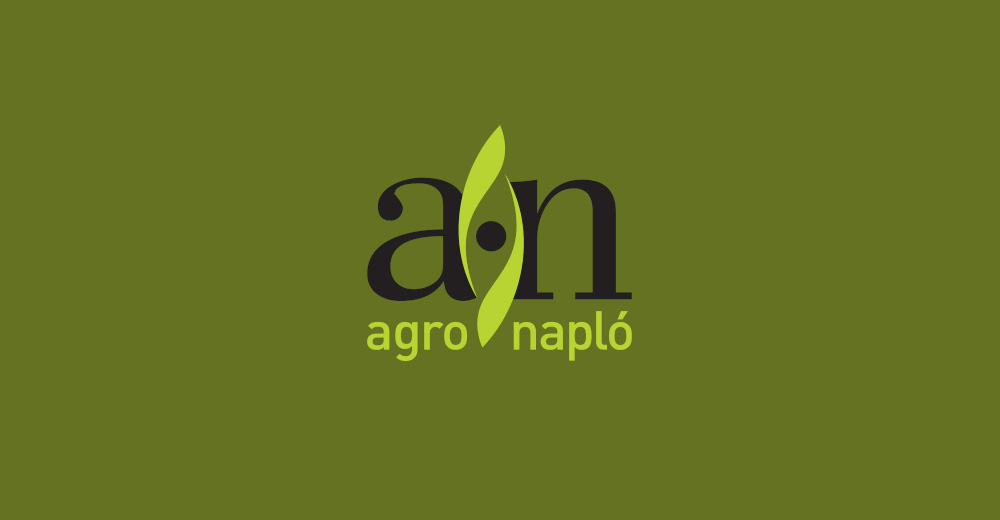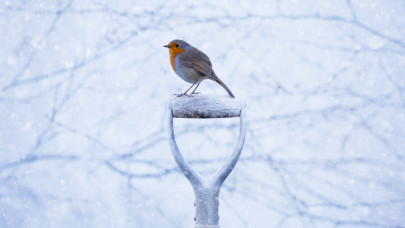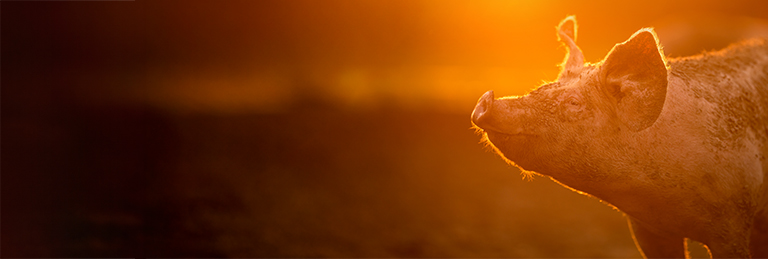EuroTier is by far the world's largest innovations market in the fields of process engineering machinery and equipment, farm inputs, management and software, animal housing installations, as well as animal housing and barn construction for the entire professional animal husbandry sector. Again this year, EuroTier 2018 can report substantial numbers of innovations submitted both from the host nation, Germany, and abroad. Almost 300 innovations were submitted to EuroTier 2018.
The crucial aspects influencing the selection of the award-winning innovations and products are their importance for practical farming, animal welfare, the effects on operating and labour management, the environment and the energy situation. Any solution that reduces work burden and improve work safety are also taken into consideration when selecting award winners.
Products that have won a Gold or Silver Medal at EuroTier 2018 have not previously been shown and/or won medals at any other major exhibition or international show, and the winning products must also be fully operable at the time of EuroTier and be available on the market before the end of 2019.
In addition to the EuroTier Gold and Silver Medals, EuroTier 2018 will be celebrating a premiere. For the first time, a special prize will be presented for products that satisfy the demands made by higher animal welfare standards. Innovations in the fields of animal welfare and animal health will be considered here. This prize distinction highlights products that promote the characteristic behavior within the relevant animal species and which therefore contribute positively to supporting animal health.
The “Animal Welfare Award” is being presented jointly by the German Association of Practicing Veterinarians (bpt) and the DLG (German Agricultural Society), and the winners have been selected by the Innovations Committee together with appropriate expert members. A prerequisite for gaining this new special award is winning a EuroTier Gold or Silver Medal 2018. The winners of the Animal Welfare Award will be announced at the “International Animal Health Event” in Hanover on 15 November 2018.
This year, innovations have been submitted for consideration under a total of 14 different livestock product categories. It is interesting to note that of the 300 submitted innovations, more than 200 were entered in just five categories: “Farm inputs and technology for their use”, “Keeping and feeding technology for pigs and cattle”, “Digital solutions for herd management and quality assurance”, “Equipment, accessories and spare parts”, and “Climate control and environmental technology”. Altogether, the Medals presented at EuroTier 2018 reflect the breadth of the respective sectors, with a clear focus this year on the further development of known products for which an essential improvement of the function and method can be expected.
Trends in farm inputs and technology for their use
In the field of farm inputs, special (supplementary) feedstuffs and/or feed additives for animal husbandry are focusing not only on more efficient feed conversion, but also on promoting/improving the use of domestic feedstuffs. This is because against the background of, for instance, ever stronger consumer demands for sustainable milk production, following the renouncement of GMO products in feedstuffs, attention is focusing critically on the use of palm oil and palm fat products made from it. This means alternatives are in demand. In the same way, feeding-based approaches to avoid boar taint are a very expedient supplement to existing “alternatives”.
Trends in pig farming
One of the key areas in the field of pig farming this year lies in improving the mode of operation, functionality and easy monitoring, as well as cleaning of the “problem areas” in conveyor systems for dry feeding installations. Furthermore, it has become evident that completely new product ideas can still be realized for greatly improving the quality and efficiency of the cleaning of feed troughs. After all, optimal feed hygiene is indispensable for animal health and performance in pig farming.
The reduction of emissions, and ammonia in particular, will play an even more central role in animal husbandry in the future. In the field of manure removal, functioning and practical implementation of the separation of feces and urine is a fundamental possibility for avoiding the release of ammonia. The aim here is, on the one hand, to convey the feces remaining on the surface, as well as the litter or residues of organic manipulable materials for the pigs, out of the pen together and, on the other hand, to drain off the urine directly and separately through appropriate apertures.
Trends in cattle production
A declared goal in the field of cattle production remains the completely autonomous realization of the process chain of automated feed removal, transport, mixing and presentation. There is a demand here for systems that can head for different feed silos and be used without problems in a number of livestock buildings. Autonomous systems are already state-of-the-art in the fields of spreading or adding litter and removing manure. Now, however, these methods are being combined or fitted with additional sensors in order to obtain an even better insight into the living conditions and housing environment of the animals.
There is a further trend targeting improvement of safety and monitoring of self-closing feeding grates, and technical installations for automatically routing cow traffic, and the electronic activation of the selection gates necessary for this. There is also a focus on automated early detection of hoof problems. This is because early identification of lameness through preventative monitoring not only serves hoof health, but can also be used for individual management of the animal's hoof care. It is also apparent that innovative alternative solutions are possible in the field of securing hoof blocks in hoof care; and in temperature conditioning of previously cooled or frozen colostrum.
Trends in milking technology
This year the developments in milking technology address the fields of improved monitoring of the milk volume without negatively influencing of the milk flow, the prediction of the individual milk yield of the animals during milking for more efficient control of the timing of the milking/process technology, and alternatives to conventional teat rubbers, which can be very time consuming to exchange.
Trends in poultry production
In poultry keeping, there is a trend similar to that seen in cattle keeping, namely that the process engineering for litter management is combined with additional sensors, for instance in order to record housing climate parameters, spatial temperature distribution and animal weights as well. In addition, drinking water hygiene is also being promoted by simplified implementation of tried-and-tested cleaning and disinfecting strategies. This is because optimal supply with hygienically sound drinker water is an essential prerequisite for keeping poultry healthy and maintaining their performance capability. Furthermore, sampling methods for performing various tests to identify the gender of hatching eggs are being developed.
Trends in digital solutions for herd management and quality assurance
This year, digital solutions for herd management and quality assurance are focusing particularly on the field of – as far as possible – automatic or simplified health monitoring of individual farm animals. They include systems with which analogue technology, for example thermometers for measuring fever, can be networked digitally. There are also new sensory systems that supply “animal data” that are better suited for practical use, and that are used, for example, for fertility management, health monitoring and early identification of illnesses, as well as for documentation. Furthermore, Augmented Reality now also involves the farm animal housing, in order to automatically obtain and display data on a location-specific basis for each individual animal for management and as a decision-making aid.
Altogether, the trends selected above by way of example show very clearly that, as always, a visit to EuroTier 2018 is well worthwhile, and one of the best decisions of the year.







